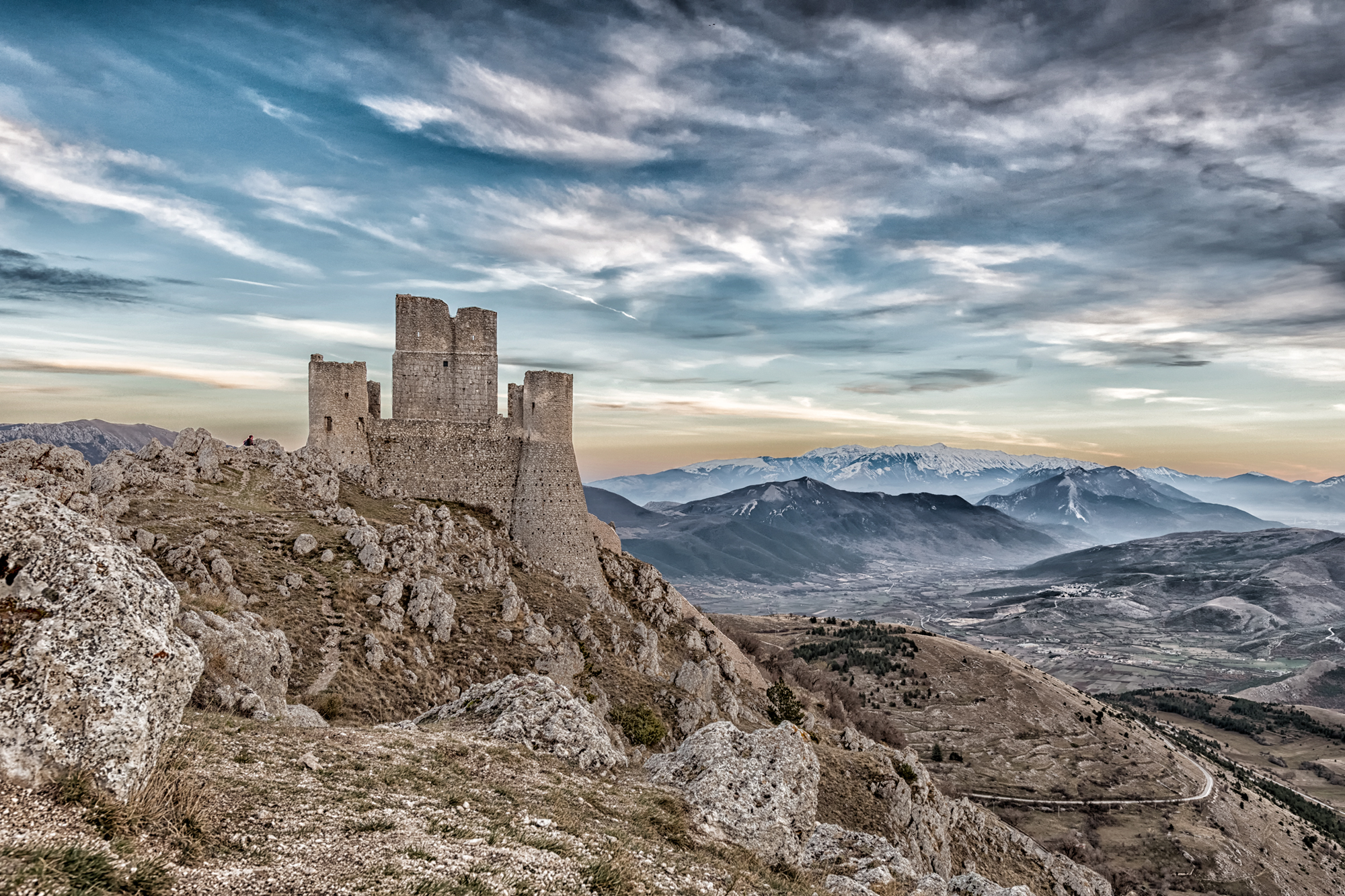SAINT EQUIZIO AND THE ABBEY OF SAN LORENZO
With the sack of Rome in 410 and the subsequent fall of the Western Roman Empire (476 A.D.), the city of Amiternum began its decline, which continued into the next century.
At the end of the 5th century, in this difficult climate, Equizio (490/570) appeared. He was a young man who made the Gospel his life’s mission and soon gathered many followers who, like him, wanted to share his love for Christ.
As the number of disciples grew, the need arose to regulate the common life and create a stable structure. For this reason he settled just outside Amiternum, now in ruins, in the territory of the present-day hamlet of San Lorenzo di Pizzoli and built his first and most important monastery there.
He wanted to entrust the community to St Lorenzo, a deacon of Rome who was martyred in 258 during the persecutions of the Roman Emperor Valerian.
The equizian community lived from the work of the fields and sheep farming and with the passing of time grew enormously.
St Gregorio also reports the existence of a ‘scriptorium’, i.e. a place where texts were copied, which were then certainly kept in a library.
It is natural to suppose that, with the ancient Amiternum now in ruins and with the birth of the Abbey, the populations soon had to move to the vicinity of the monastery, as it was a producer of wealth and protection. This movement gave rise to the new town of Marruci and Pizzoli, initially developed around the Abbey.
As proof of the importance and greatness of the equizian monastic movement, St Gregorio states that St Equizio, because of his holiness, populated the entire province of Valeria with “many monasteries of men and also of women”.
According to ancient testimonies the equitian monastic order gave the Church two Pontiffs and numerous Bishops and Cardinals.
Equizio never received holy orders and died in 570 in his monastery of San Lorenzo, where his remains were also kept.
He was immediately venerated as a saint and proved to be a great thaumaturge.
Together with St Benedetto da Norcia, he is the father and spreader of monasticism in Italy and the West. In fact, after his death, his order did not die out at all, but was absorbed by the benedictine order with which it had such an affinity and approach to life.
In the 10th century, the Abbey of San Lorenzo became a possession of the Abbey of Farfa, which was then at the height of its splendour and took steps to reclaim the amiternini territories.
The Abbey Church of San Lorenzo was always considered the Mother Church of the whole Pizzoli territory, so much so that when the Castle of Pizzoli had to build its church within the city walls of L’Aquila it wanted to dedicate it to San Lorenzo, like the Mother Church of the castle itself.
His relics remained buried for almost a thousand years, perhaps to protect them from the Lombard invasions and all the invaders that had followed over the centuries.
In order to entrust St. Equizio with the city that had been devastated by the earthquake on 26 November 1461, his relics were dug up and, on 11 August 1462, placed in the crypt of the Collegiate Church of San Lorenzo intra moenia in L’Aquila, where they remained until 1703, when another earthquake destroyed the church and the city, forcing the people of L’Aquila to move them back to the church of Santa Margherita, entrusted to the Society of Jesus.
After the earthquake of 04 April 2009, the Holy Relics of Abbot Equizio were moved back to Pizzoli.
Today they are kept with great honour in a special wooden ark on the main altar of the Abbey Church of the Archicenobium where Equizio lived, died, was buried and worked many miracles.
The Abbey of Sant’Equizo and consequently the Parish of San Lorenzo thus boast a fifteen-century old history, rich in tradition, culture and spirituality.
There is no doubt that Abbot Equizio is a beautiful example of Christianity, a ‘most holy man’, as Pope St. Gregorio the Great called him.
He continues today as a ‘father in the faith’ to protect his people and shines as a master of evangelical perfection.
The liturgical feast of St. Equizio is celebrated on 11 August and he is co-patron of the city of L’Aquila with St. Massimo.
(Collage from various sources)

